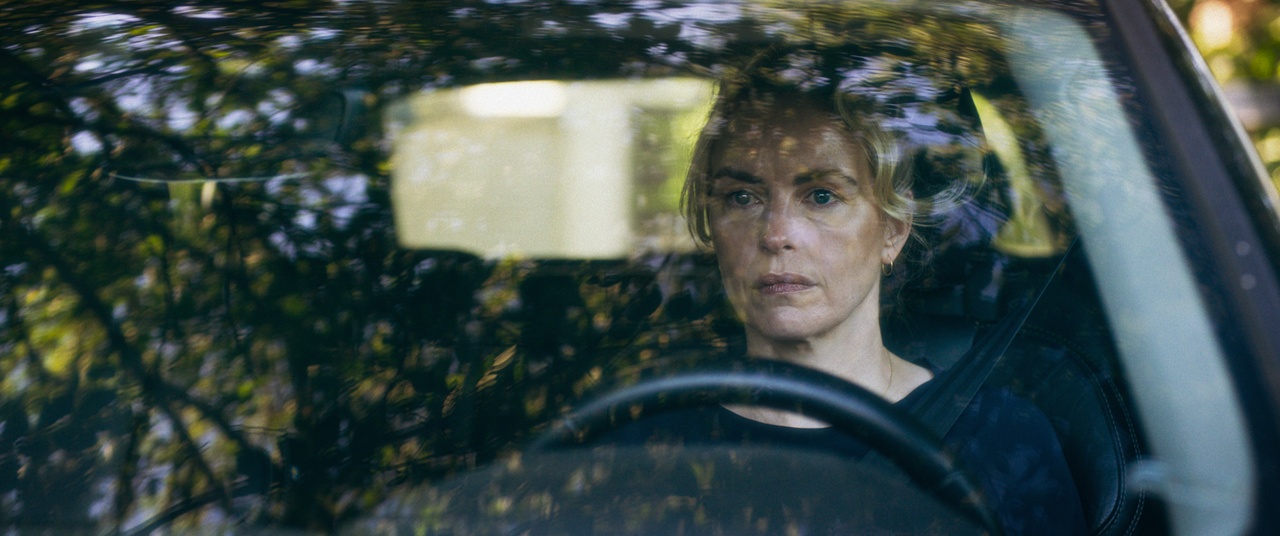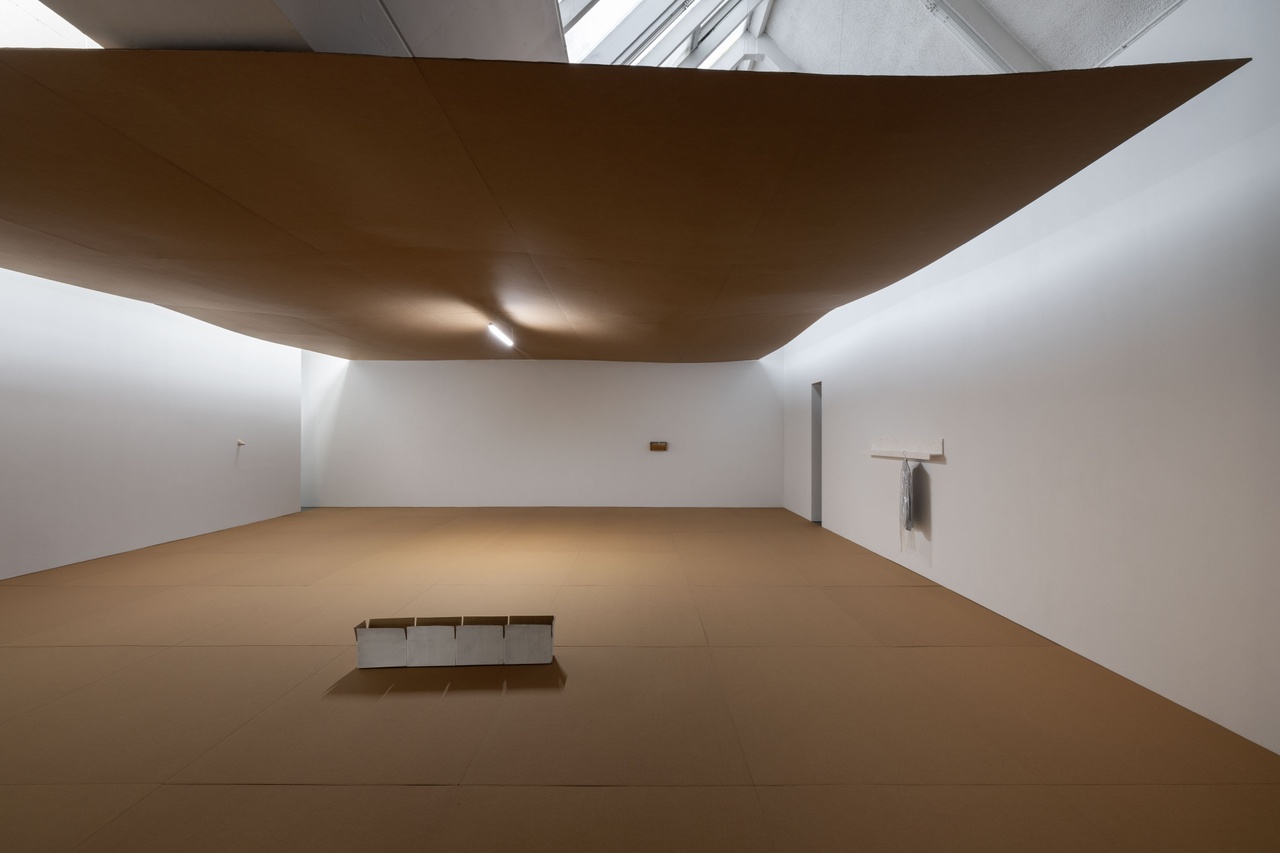A film drama that portrays two unequal women and their problems, with its plot relocating the experimental set-up of Pier Paolo Pasolini’s “Teorema” to Brandenburg. A book that investigates loneliness as a universal feeling using powerful case studies. An exhibition that draws from autobiographical references without opting for a reductive referentiality. In her monthly column, our publisher Isabelle Graw once again offers some insights into what she has seen and read recently, in a series of pointed mini reviews.
Ina Weisse, “Zikaden”
This film – a German-French collaboration – is impressive in its Éric Rohmeresque slowness, memorable images, and brittle dialogue, in which what is unsaid always resonates. Its remarkable soundtrack builds the distorted sounds of the Brandenburg landscape (above all the chirping of the cicadas that give the film its title) into an uncanny acoustic backdrop. The plot is quickly told: Two dissimilar women meet in the countryside around Berlin. One of them, Isabell (perfectly embodied by Nina Hoss) never laughs, despite her financially comfortable life. Her father (played by Rolf D. Weisse, the father of the film’s director) is a renowned architect who recently suffered a stroke. The film’s unvarnished portrayal of his condition is moving in itself; witnessing his slurred speech and coughing fits while eating takes the breath away. Isabell’s mother (likewise played by the director’s mother) is an artist and understandably overwhelmed by her husband’s situation. Ina Weisse’s decision to cast her own parents for these roles is a radical one, since it forces viewers to adopt the same intimate view of them that she has herself. At the same time, she delivers her parents to the gazes of the audience.
The wheelchair-bound father owns a modernist weekend home of his own design in Brandenburg, in the same area where Anja (Saskia Rosendahl, in another convincing performance) also lives. Anja is a single parent and lives with her young, intractable daughter in precarious circumstances. While the daughter begs for money for an ice cream at a gas station, her mother has to do cleaning jobs, despite the fact she’d actually rather cook for a living. Isabell also has problems: Her marriage with Phillip (an emotionally unavailable Frenchman, perfectly played by Vincent Macaigne) is at an end. In one memorable scene, Phillip abandons Isabell at the airport in order to embark on their planned shared trip together alone. She then spends days on end trying to call him, only ever reaching his mailbox. Rarely has the mute suffering experienced at the hands of a passive-aggressive partner been portrayed so convincingly.
Isabell and Anja run into each other while out walking, and despite the class difference between them, a relationship develops that is simultaneously tender and clouded by discord. Both women are torn by feelings of inner conflict: Anja finds it hard leaving her child alone because of her job, and Isabell struggles with the growing incompatibility between her professional ambitions and her responsibility toward her increasingly frail parents. At the same time, there are conflicts between the two women, such as when Anja feels humiliated by Isabell giving her daughter a gift.
Beyond this, the issue of the nursing crisis forms a leitmotif of the film, with Isabell and her mother repeatedly searching for a new caregiver for the father, who is depicted as a stubborn patriarch despite the massive impairments caused by his stroke. At some point, Isabell suggests Anja could take care of her parents.
The film’s ending recalls the plot of Pier Paolo Pasolini’s Teorema (1968), with Anja taking Isabell’s place within the family. In one scene, she sits peacefully at the dinner table with her daughter and Isabell’s mother while Isabell, having returned to her professional life, is now excluded from this new constellation. The gruesome death by asphyxiation suffered by Isabell’s father just moments before is conveyed to the viewer through sound alone. Anja – his new caregiver – chose not to intervene, and to let him die, although in doing so she also released him from his suffering. Once again, the strength of this film lies in the way it embraces ambivalence. It also shows the effects of structural problems such as a lack of money, dysfunctional relationships, and unmanageable caregiving responsibilities on the lives of two women. Both of them carry on stoically in spite of everything – a perseverance that is perfectly embodied by Nina Hoss’s unwaveringly impassive and resolute face.
Germany/France, 2025, 100 minutes.
Janosch Schobin, “Zeiten der Einsamkeit. Erkundungen eines universellen Gefühls”
With this book (whose title translates as “In Times of Loneliness: Explorations of a Universal Feeling”), the sociologist Janosch Schobin offers an incisive typology and analysis of loneliness as a phenomenon. He fittingly characterizes it as an almost physical sensation of pain, which can totally overwhelm the life of the person experiencing it. According to Schobin, it’s almost impossible to separate loneliness from the person feeling it; the one corresponds to the other. With older people especially, it can often be observed how loneliness turns into a sort of lifestyle. In methodical terms, the author succeeds in underpinning his theorization of this “universal feeling” with concrete case studies. These portraits of the lonely are written in an almost literary style that makes reading the book a pleasure, in spite of its depressing findings.
But one step at a time. Schobin begins by refuting the common perception that loneliness can be both positive (if being alone is freely chosen) and negative (if suffered involuntarily). According to him, loneliness is connected with extreme psychological strain even when it is actively sought, and the person who willingly created this loneliness sometimes feels as entirely abandoned as those who have it forced upon them. Schobin also examines loneliness from a historical perspective, stating that Germany suffered from “postwar loneliness” following the Second World War; according to him, the Nazis’ break with civilization [Zivilisationsbruch] also brought a rise in experiences of loneliness. Pop music functioned as an antidote to this – what Schobin aptly describes as “loneliness compensation.” Listening to music can actually help mitigate feelings of loneliness – and not just pop music, I would add. The author also shows how our networked society not only increases our number of social contacts but also puts us at greater risk of loneliness; after all, not everyone has the energy to be constantly working on their network and keeping up with the relationship marketplace. Following Hannah Arendt, Schobin therefore describes the late-modern subject as a “person without a world.”
Against the backdrop of the current political surge to the right, Schobin also states that loneliness and isolation make people particularly susceptible to the seductive appeal of totalitarian movements: “The lonelier people are, the less they support democracy, and the less they participate in democracy, the lonelier they become.” It’s certainly true that the current crisis of democracy is also partly a consequence of the rise in loneliness. Equally persuasive is the fact that Schobin does not connect emancipatory movements with a rise in experiences of loneliness, as was common for a long time. For example, if women were able to break free of their husbands and choose new relationships – instead of being forced to remain in a marriage that made them feel lonely, as was the case in the 19th century – then this reduced their risk of loneliness. According to Schobin, emancipatory processes go hand in hand with a “reduction of loneliness,” in part because they “foster intensive, positive familial relationships that are particularly good at protecting against loneliness.” Rigid, traditional societies are thus far lonelier than progressive, individualistic ones in Schobin’s view. The case studies collected in the second part of the book focus primarily on the class-related aspects of loneliness. Schobin observes that poverty often brings a feeling of worthlessness with it – a sort of “internalized self-rejection” that leads to reduced social contact.
Loneliness, Schobin claims, is particularly pronounced in poorer people, leading him to talk of the “lonely classes.” It’s not only those in poverty that he sees as being at risk of loneliness, however, since those with upward social mobility feel as if they don’t really belong to either their community of origin or their “new target milieu.” A further case study demonstrates how failing to get over the death of a loved one can lead to long periods of loneliness. At the end of the book, Schobin predicts that the pharma industry will soon discover a new field of activity in loneliness and invent medications for alleviating it. For according to him, crises of loneliness like the one recently experienced during the coronavirus pandemic will increase in the future – and here I also agree with him.
Hanser, 2025, 224 pages. (In German.)
“Ian Waelder: Cadence”
White Cube galleries are often forbidding spaces, with glaring neon lighting, and where you don’t want to spend long. For his exhibition at carlier | gebauer in Berlin, however, Ian Waelder lined the floor and ceiling of the exhibition space with cardboard, which creates a more comfortable atmosphere. The floor feels softer, the room snug. A few objects are positioned throughout the space at a distance to one another, hung on the wall or placed on the floor. These mostly have a genealogical function and resemble mnemonic devices, as with Novelette (2025), a minimalistic row of open cardboard boxes painted white and containing the sketched outline of a pair of the artist’s father’s shoes or a miniature Opel Olympia – the car Waelder’s grandfather was forced to sell for a fraction of its value in order to flee from Nazi Germany to Chile. Since many of Waelder’s objects stem from genealogical investigations into his family history, his approach could be related to the Romantic Conceptualism of the late 1990s. In my view, however, he has found a method of getting around the problem of referentialism associated with that movement. Representatives of Romantic Conceptualism such as Danh Võ and Jan Timme referred to artists like Bas Jan Ader, who imbued the traditionally impersonal field of Conceptual Art with a personal dimension. This was also connected with the problem of referentialism, however, which was much discussed in the 1990s: if every object is grounded in a personal reference, there is a danger it will exhaust itself in referentiality. But by emphasizing the incomplete and fragile aspects of his references, Waelder manages to avoid any such reductionism. Instead, they resemble blind spots – with literal spots and stains, accordingly, featuring often in his work. Seated (Standing) (2025), for example, is a marmalade- and oil-flecked article from Die Zeit showing Thomas Mann and his daughter Erika during a signing of his books. Immigration is at the core of this work – the experience of living in another country and adopting its culture and customs for oneself.
Waelder largely forgoes color in the exhibition, as if trying to illustrate gaps in memory with the help of white paint. His anti-referentialist approach is particularly clear in From hip to fingertip (Opel upside down) (2022), a wall-mounted wash basin that recalls Marcel Duchamp. This object, too, represents a part of the aforementioned Opel Olympia, which the artist recreated together with his father. The sale of this car saved the life of his grandfather, Federico Waelder, who unlike other family members survived the Shoah. In my view, the rebuilt car part stands for the insight that history can only be traced in fragments. It’s therefore fitting that the exhibition space is intermittently filled with music – a recording of a jazz improvisation composed and played by Waelder’s grandfather, which his father coincidentally discovered on a cassette. The long moments of silence between the music allow absence to be physically experienced; we hear the incomplete traces of the person lost. For Cadence (Elastic Piano) (2025), Waelder crumpled up an announcement for a piano performance by his grandfather and stuffed it inside a wooden construction; here, again, his grandfather’s work appears as an inaccessible hieroglyph. It’s clearly not possible to reduce Waelder’s objects to the references inherent in them. On the contrary, they demonstrate that the past cannot be recovered in the form of references; to the same extent that something is regained here, it equally escapes our grasp. For a further example of this elusive dynamic, one might point to the shirt of Waelder’s that is displayed on a clothes hanger wrapped in protective film (To Wait, 2025). This is a self-portrait in disguise – not least since Waelder placed a nose-like object made of air-dried porcelain by the collar. But here, too, the artist remains absent beyond his outer covering – the shirt. His clothes hanger also recalls Duchamp’s Trap readymade from 1917.
The exhibition contains a further partial object symbolizing absence: a large nose-like element mounted on the wall (Torsion, 2025), alluding to both Waelder’s family physiognomy and the antisemitic trope of the “Jewish nose.” On closer inspection, this “nose” actually consists of half a shoe tree, taking the idea of an inherited physical trait to the point of absurdity. Ultimately, it is the conditions of exile that this exhibition repeatedly negotiates, as with the article on Thomas Mann: Waelder appropriates an icon of German emigration, tearing the text from its original context of the German Feuilleton and marking it as part of his own reality by dripping traces of his breakfast onto it. His own life, too, is only to be found as an indexical trace here. It eludes any fixed interpretation, just as the references in his objects defy any reductionist conclusions.
carlier | gebauer, Berlin, March 1–April 17, 2025.
Isabelle Graw is the cofounder and publisher of TEXTE ZUR KUNST and teaches art history and theory at the Hochschule für Bildende Künste – Städelschule in Frankfurt am Main. Her most recent publications include In Another World: Notes, 2014–2017 (Sternberg Press, 2020), Three Cases of Value Reflection: Ponge, Whitten, Banksy (Sternberg Press, 2021), and On the Benefits of Friendship (Sternberg Press, 2023); and the forthcoming Fear and Money: A Novel (Sternberg/MIT Press, 2025).
Image credits: 1. Rob Kulisek; 2. © Judith Kaufmann, Lupa Film; 3. © Janosch Schobin; 4. © Andrea Rossetti, courtesy of the artist and carlier | gebauer, Berlin/Madrid





